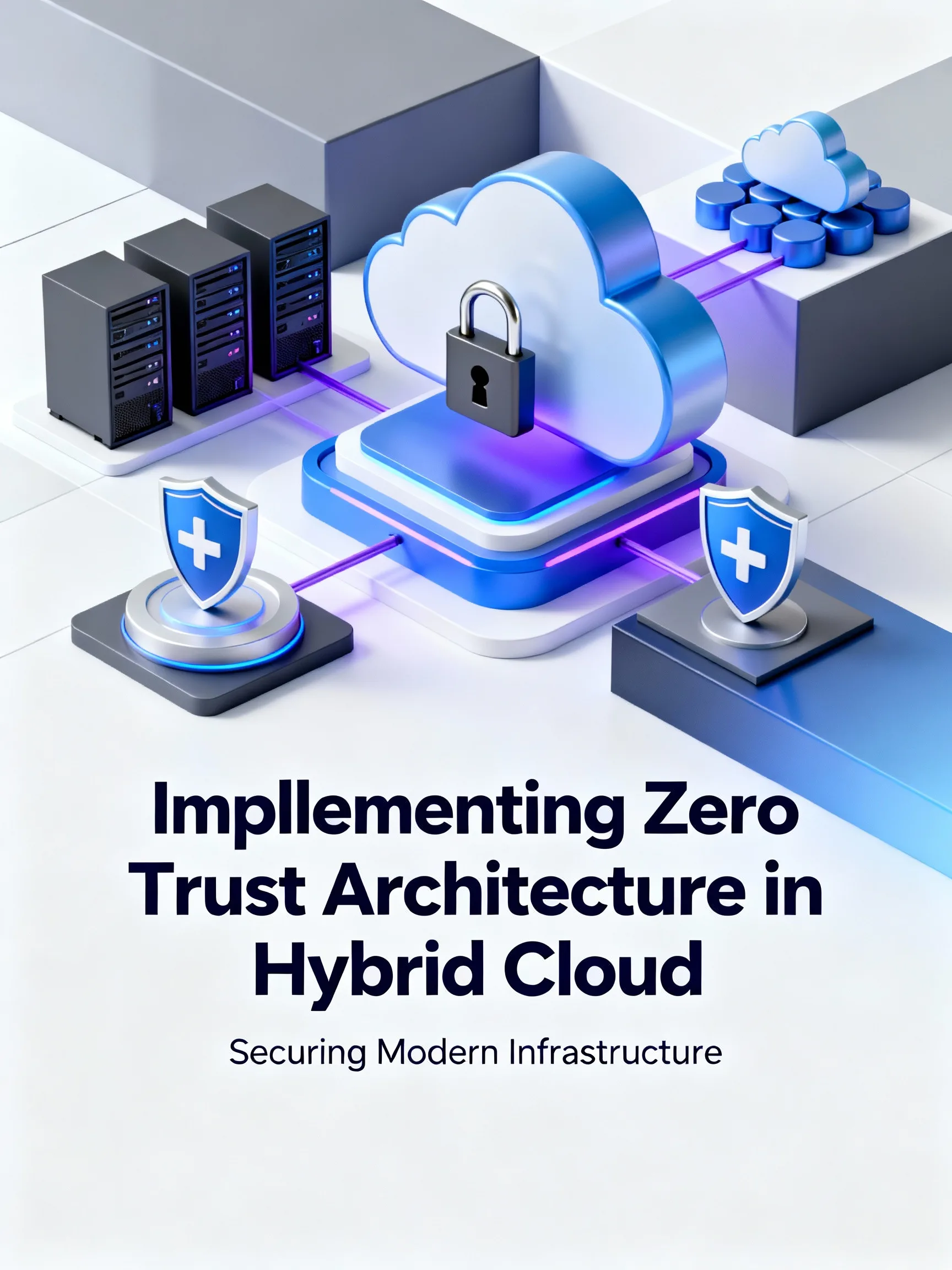
Introduction
Implementing Zero Trust Architecture in Hybrid Cloud demands a shift from perimeter-centric security to continuous verification across AWS, Azure, GCP, and OCI. This article outlines practical steps, provider-specific integrations, and examples to help security and platform teams design a unified Zero Trust Architecture in Hybrid Cloud that reduces lateral risk and enforces least privilege.
Core principles and initial assessment
Start by mapping assets, identities, data flows, and trust boundaries across clouds. Zero Trust Architecture in Hybrid Cloud relies on four core principles: verify every request, enforce least privilege, segment networks and workloads, and continuously monitor and respond. An initial assessment should identify high-value assets, data classification, existing identity providers, and current telemetry sources (logs, traces, metrics).
Identity and access control across clouds
Identity is the foundation. Consolidate or federate identity with a central IdP (for example, Azure AD or a cloud-agnostic provider like Okta) and enable SAML/OIDC federation to each cloud account. Key patterns include:
- Use short-lived credentials and role-based access: AWS IAM roles with STS, Azure managed identities and Conditional Access, GCP Workload Identity Federation, and OCI IAM policies for service principals.
- Enforce adaptive access with conditional policies: device posture, geolocation, MFA, and risk signals. Examples: Azure Conditional Access, Google Identity-Aware Proxy (IAP) style controls, and third-party ZTNA products (Zscaler, Palo Alto Prisma Access) for consistent policy enforcement.
- Apply just-in-time elevation for admins via privileged access workflows and PAM integration to minimize standing privileges.
Network segmentation and workload controls
Replace broad network perimeters with microsegmentation and east-west controls. Implement these practical controls across providers:
- Use VPC/VNet/VCN segmentation, private endpoints, and provider-native firewalls: AWS Security Groups and Network ACLs layered with Network Firewall or NACLs; Azure Firewall and NSGs; GCP VPC Service Controls and Firewall Rules; OCI network security groups and service gateways.
- Adopt a service mesh (Istio, Linkerd or managed equivalents like AWS App Mesh) or sidecar proxies to enforce mTLS, service-level policy and identity-based access between workloads. This allows workload-to-workload identity and fine-grained authorization based on service identity instead of IP address.
- Leverage provider private connectivity features (PrivateLink, Private Endpoints, VCN Service Gateway) to keep traffic off the public internet when possible.
Data protection, secrets, and CI/CD integration
Protect data at rest and in transit, and make secrets ephemeral and discoverable only by authorized workloads. Practical actions:
- Encrypt data with provider-managed keys or customer-managed keys (AWS KMS CMKs, Azure Key Vault keys, Google KMS, OCI Vault). Use key access policies to enforce least privilege.
- Centralize secrets using Vault or cloud secrets managers and enable dynamic secrets for databases and services. Integrate secrets retrieval into CI/CD pipelines and runtime via short-lived tokens.
- Embed security gates in CI/CD to scan images, IaC templates, and dependencies. Use image signing and runtime image verification to ensure only vetted artifacts run across clouds.
Observability, policy engine, and automation
Continuous verification needs telemetry and automated response. Implement a cross-cloud observability plane and a centralized policy engine:
- Send logs and metrics to a central SIEM or observability platform (Splunk, Elastic, or cloud-native Security Command Center, AWS Security Hub, Azure Sentinel) to correlate identity, network, and workload telemetry.
- Use a policy engine such as OPA/Rego or cloud-native policy tools to codify authorization decisions and enforce configuration compliance across accounts. Automate remediation for drift with infrastructure as code and guardrails (AWS Config, Azure Policy, GCP Organization Policy, OCI Audit).
- Define measurable SLOs for detection and response. Example: aim to detect and contain suspicious lateral movement within 15 minutes using combined endpoint telemetry, network flow logs, and service mesh telemetry.
Practical deployment example
Consider a fintech running services in AWS and GCP with dev/test in Azure and backups in OCI. Implement Zero Trust Architecture in Hybrid Cloud by:
- Federating identities to Azure AD and enabling conditional access across all accounts.
- Deploying a service mesh in Kubernetes clusters across clouds to enforce mTLS and policy for east-west traffic.
- Using private endpoints for cross-cloud data sync and a central SIEM aggregating cloud audit logs, VPC flow logs and service mesh telemetry. Automated playbooks in the SIEM block compromised sessions and rotate affected service credentials.
Operationalizing and measuring success
Operational adoption requires runbooks, training, and incremental rollout. Start with high-risk assets, iterate policies in a testing namespace, then expand. Track metrics like mean time to detect (MTTD), mean time to remediate (MTTR), number of privileged access events, and percentage of workloads using mTLS. Regularly review policies and perform red-team exercises to validate controls.
Conclusion
Implementing Zero Trust Architecture in Hybrid Cloud is both a technical and organizational effort. Focus first on identity consolidation, workload segmentation, consistent policy enforcement, and centralized telemetry. By phasing changes, automating controls, and measuring detection and response, teams can reduce lateral risk across AWS, Azure, GCP, and OCI while enabling secure, scalable hybrid operations.






Leave a Reply